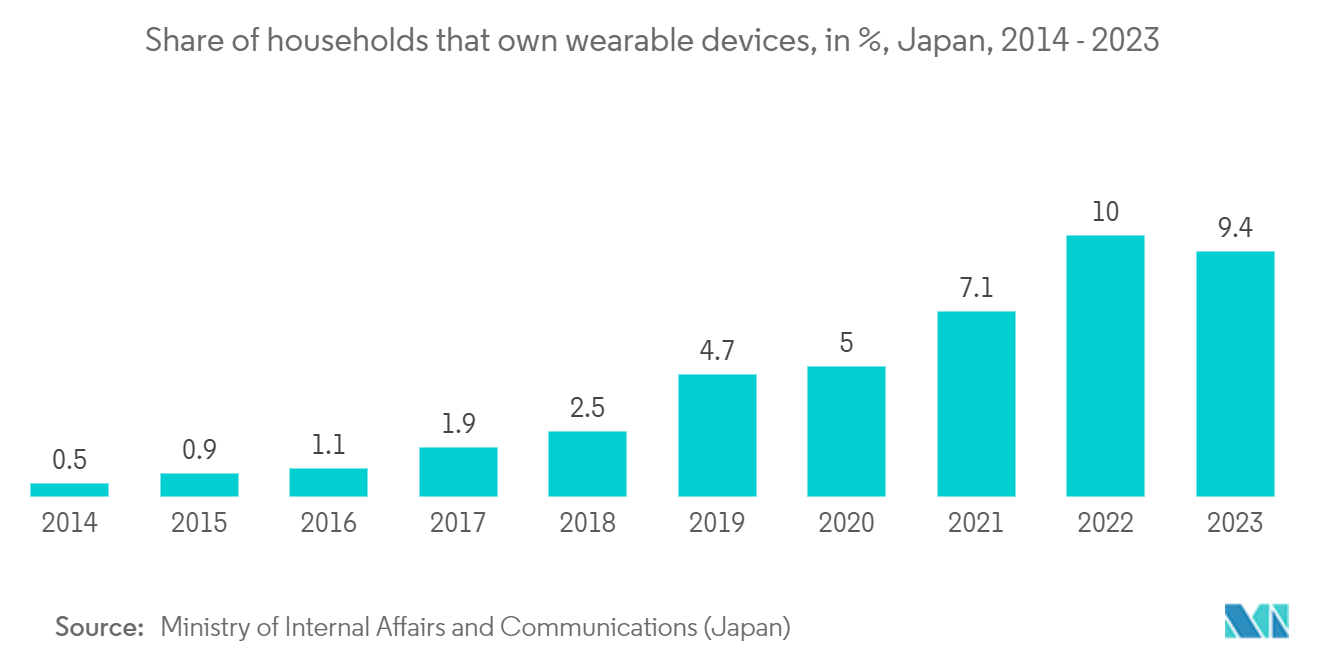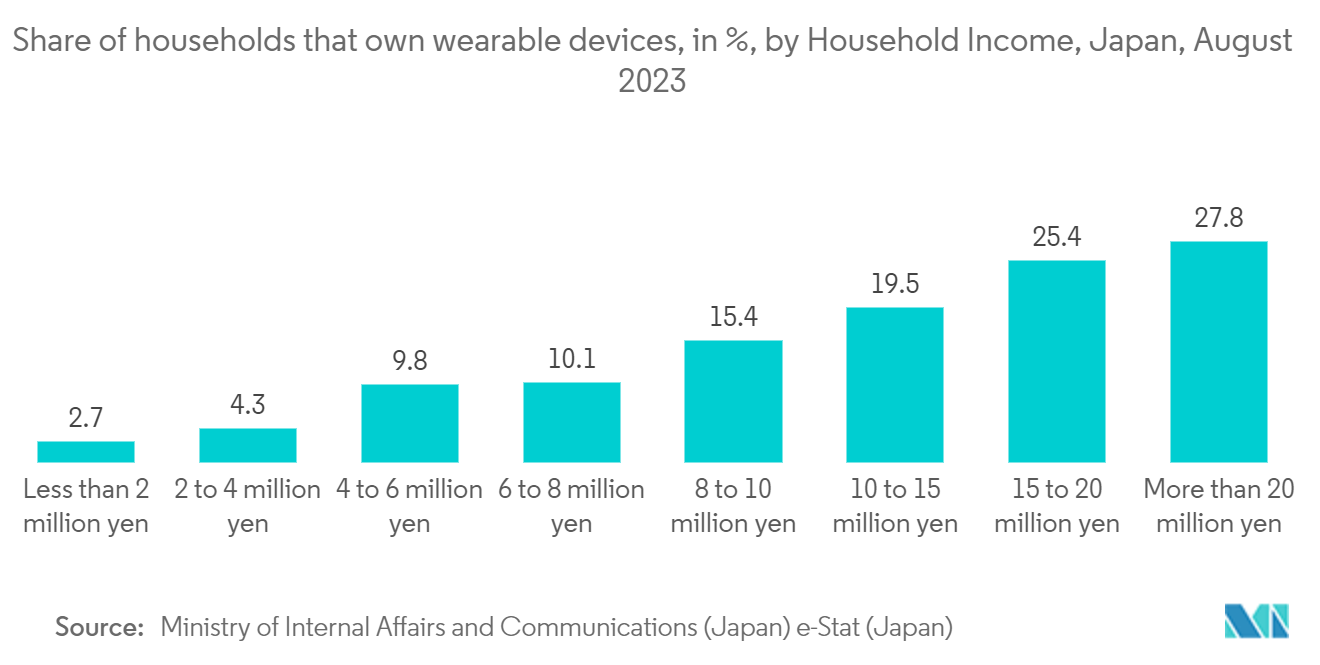Market Trends of Japan Fitness Ring Industry
Rising Adoption of Wearable Technology to Drive the Market
- In Japan, the wearable technology market is witnessing a surge in popularity, driven by several key factors. Notably, as consumers become more health-conscious, the appeal of wearable devices capable of real-time health monitoring grows. This trend is apparent in the rising demand for fitness trackers, rings, and smartwatches.
- Moreover, the rising trend of quantified self-movement, coupled with the demand for tailored well-being insights, is driving the surge in wearable adoption. In addition, the continuous growth of the Internet of Things (IoT) ecosystem has created an ideal environment for wearables. This growth facilitates smooth integration with other smart devices, fostering a more interconnected and convenient lifestyle. Such interconnectivity not only amplifies the user experience but also acts as a key catalyst for market expansion.
- For instance, data from Japan's Ministry of Internal Affairs and Communications revealed that in 2023, the household penetration rate of wearable devices in Japan reached 9.4%. While this marks a decline from the prior year, the current rate still surpasses the levels seen in the mid-2010s.
- Additionally, the rising adoption of telemedicine and remote health monitoring, coupled with the growing demand for wearables that can monitor vital signs and transmit data to healthcare professionals, is poised to propel the wearable technology market in Japan through 2024.
- In April 2024, Japan's internal affairs ministry unveiled an initiative offering online doctor consultations and medication guidance. These services are accessible via private booths established at post offices. Additionally, medications are delivered directly to patients' homes from pharmacies through the postal service.

Smart Fitness Rings to hold a major share
- Japan stands out for its cutting-edge technology and a consumer base that's quick to embrace innovations. Japanese consumers are always on the lookout for the latest gadgets and find a perfect match in smart fitness rings. These rings boast features like biometric sensors, real-time health monitoring, and effortless connectivity with other smart devices, resonating with Japan's tech-savvy culture.
- In Japan, there is a deep-rooted cultural focus on health, longevity, and overall wellness. Smart fitness rings align with this ethos, providing features like heart rate monitoring, sleep analysis, activity tracking, and stress management. Such capabilities empower users to uphold the healthy lifestyle that is deeply cherished in Japanese culture.
- Smart fitness rings often connect seamlessly with a wider health and wellness network. This includes mobile health applications, healthcare professionals, and fitness services. Such integration fosters a comprehensive health management approach, allowing users to monitor their health, gain tailored insights, and even collaborate with healthcare providers, amplifying the rings' overall value and functionality.
- Japan's technological innovations, from advanced wearables monitoring vital signs to telemedicine platforms facilitating remote consultations, solidify its leadership in digital health. For instance, Takeda has pioneered a digital therapeutic app tailored to monitor Parkinson's disease. In May 2023, in collaboration with Kanagawa Prefecture, south of Tokyo, Takeda unveiled an integrated care solution dubbed “Care for One.” This solution utilizes an app to gauge Parkinson’s disease symptoms, leveraging a program developed by Apple Watch for movement disorder detection.
- Patients can input additional medical details into the iPhone app, transmitting comprehensive data directly to their physician's computer. Notably, this functionality holds potential for adaptation using a fitness ring. Such rings, being smaller than traditional wearables, can be worn for extended periods, potentially offering more comprehensive and accurate data.
- In Japan, the adoption of wearable technology is notably higher among high-income households. A survey conducted in August 2023 by Japan's Ministry of Internal Affairs and Communications highlighted this trend: approximately 28% of households earning over JPY 20 million (USD 0.14 million) annually owned a wearable device. In contrast, households with lower annual incomes showed a diminished adoption rate for these devices. As a result, companies in Japan's wearable device market might consider introducing more affordable options to cater to these lower-income households.


